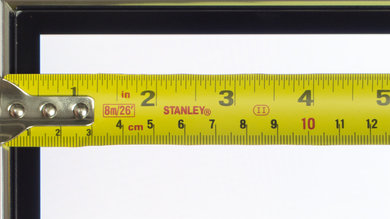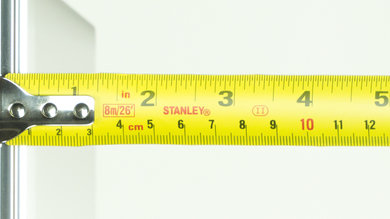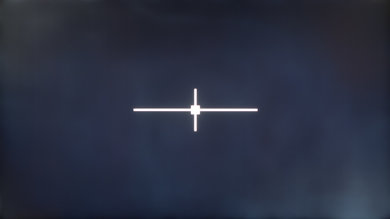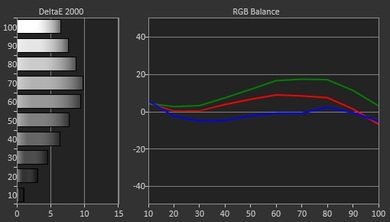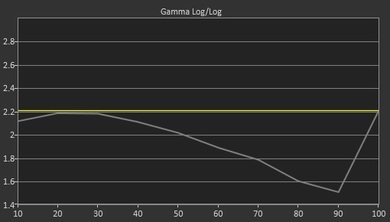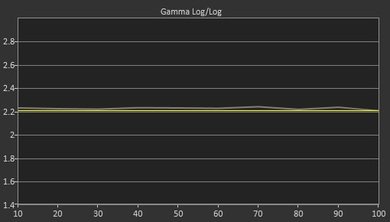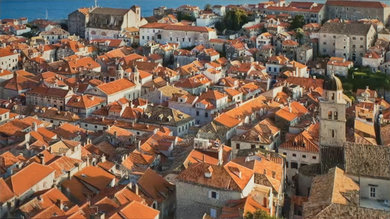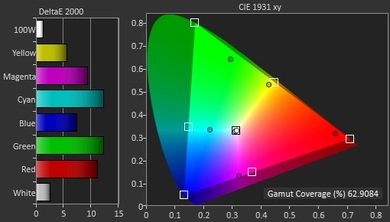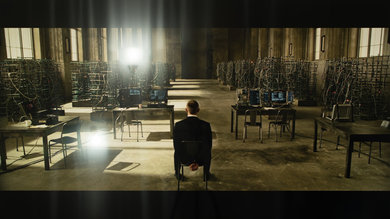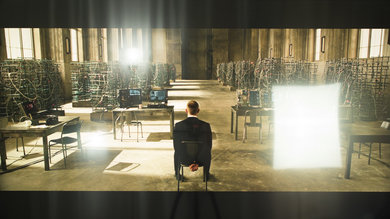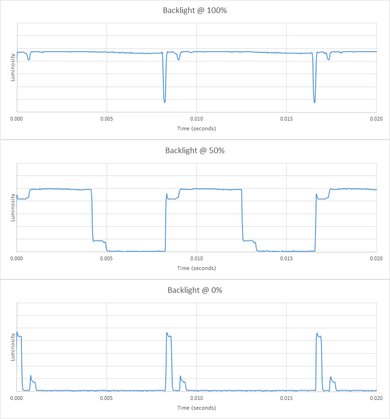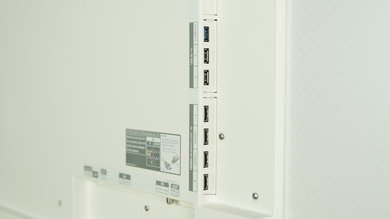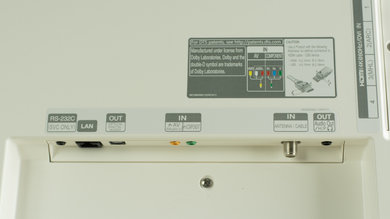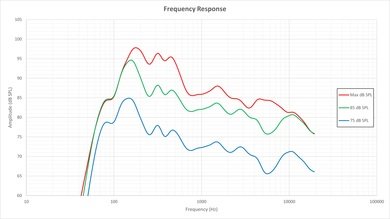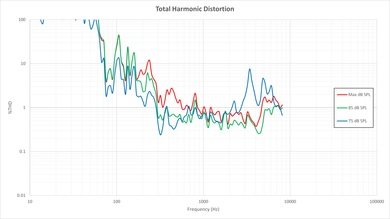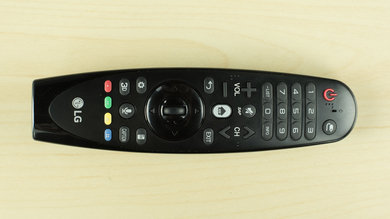The LG UF9500 UHD TV is LG's flagship 4k LED TV. Despite its plethora of features, the image quality is sub-par, especially when watched in the dark. For a well-lit, wide living room with seating on the sides, it will still fit the bill, and most will enjoy its good smart functions.
Our Verdict
The LG UF9500 is the flagship 4k LED TV from LG. Feature-rich, it still struggles with picture quality because of its low contrast and grayish blacks. It will shine in a well-lit room, and when viewed from the side, but even then, sports fans might be disappointed by the poor screen uniformity. Gamers will enjoy its motion handling and responsiveness, though. As for movie lovers or people that like to watch TV in the dark, they will be happier with a different, and probably even cheaper TV.
-
Great viewing angle
-
Great smart TV interface (WebOS 2.0)
-
Very bad screen uniformity
-
Poor picture quality in a dark room
- 7.1 Mixed Usage
- 6.6 Movies
- 7.3 TV Shows
- 7.0 Sports
- 7.4 Video Games
- 6.9 HDR Movies
- 7.1 HDR Gaming
- 6.8 PC Monitor
Changelog
Check Price
Test Results
The LG UF9500 looks high-end with its particular stand. The TV is very slim on the upper portion, and although the middle and bottom portions are a bit thicker, it still manages to look sharp overall. Like some other recent TVs from LG, its back is all white, which is something to keep in mind if the TV won't be close to a wall.
Black will appear gray in a dark room, which isn't ideal.
The local dimming zones are too big to provide a real improvement to the picture. In our test, when the dot is moving fast, the middle zones don't appear to light up anymore. Only the left and right edges of the screen lit up (almost half of the screen lit up for each side).
This TV isn't able to bring highlights very bright.
Uniformity is particularly bad. In fact, it is the worst we have seen to date. Edges of the screen are very dark and banding can be seen in middle of the screen on most content. It is especially distracting for sports on long camera pans over playing surfaces. For example, in football, long passes where the camera travels from one end of the field to the other will reveal the 'dirty screen effect' (DSE).
Like other TVs that have IPS panels, the LG UF9500 has a great viewing angle. Watching from the sides won't degrade picture quality as much as most other LED TVs with VA panels.
Update 01/06/2017: We have changed the methodology of testing. Since this is an old TV which we don't have anymore, we extrapolated the results from 2016 TVs.
Calibration was hard to achieve, and we had to lower contrast to correct the more pronounced gamma issues. Our settings then give a less-bright picture, with lower contrast than what the TV can do by default. It was a sacrifice that has to be made to get the grayscale close to gamma 2.2.
24p sources like Blu-ray will look smooth, without judder. You can only get rid of judder on 60p and 60i by using motion interpolation, which adds the soap opera effect.
It isn't the fastest TV around but you most likely won't complain about responsiveness. Controls will feel good for all kinds of games. Motion interpolation isn't recommended while gaming, because it increases the input lag too much.
Most PC inputs are compatible, except for 1080p @ 120Hz. For all supported modes, chroma 4:4:4 can be enabled for sharp-looking text. To enable, change the input icon to PC. While in 4k, 'HDMI ULTRA HD Deep Color' must also be turned on. Under PC mode, the input lag is the same as in game mode as long as the 'Game' picture mode stays selected.
Very good distortion results overall. We did, however, experience some strange behavior (clicks and pops) with our unit. It happens only at high frequencies, with the volume on the TV set to 25 and lower (see the spikes above 3 KHz on the blue line). The problem seems to go away when the volume is increased above 25. This issue may not be audible under regular use, but it was quite audible and reproducible with our test signal.
WebOS 2.0 is the smart platform running on the LG UF9500 and it offers a very good interface. It could have been better with more apps, but the most popular ones are there. Combined with the great interface, the magic remote makes everything easy to navigate and can act as a universal remote for your other connected devices, such as a cable box and receivers. Switching inputs feels like using apps, which is great.
You can see our full review of the LG WebOS here.
Comments
LG UF9500: Main Discussion
Let us know why you want us to review the product here, or encourage others to vote for this product.
- 21010
Bought the 79UF9500 in late 2015. Got an amazing deal through a friend of a friend… $6,000 installed.
It has a lot of hours on it, almost 25,000 hours.
I go through a basic calibration process every couple of years to adjust.
It has been on the wall in a bright room the entire time, and as your review says, it excels in that environment.
The negative: I know it doesn’t have all the latest, greatest, bells and whistles. A $1,500 86" low end TV these days blows it away in all categories. Yeah, it’s blacks are a bit grey, it’s whites not uniform, there are a million others compared to current TVs.
The positive: going on 10 years at an average cost of $600/yr. Great viewing angles - important in a large media room with a lot of seating.
But you know what? My friends come over and watch sports, movies, regular TV shows, etc. and they are amazed at how good it looks. Then I tell them it is NINE years old, and they’re just blown away.
Of course I’ve always paired it with a high end audio setup, but LG deserves proper accolades for this model. Best and most durable TV I’ve ever owned.
I will run this 79UF9500 into the ground before I spend another dime on a TV.



